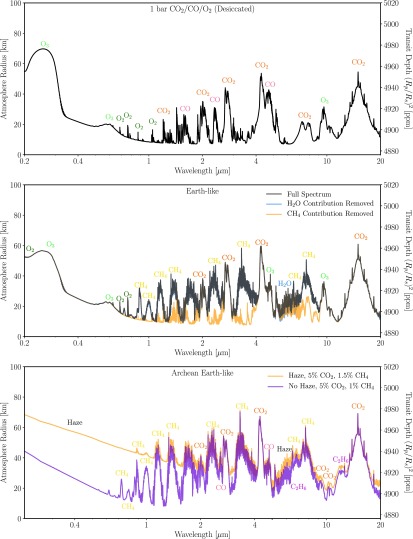FIG. 20.
Similar to the transmission spectra of Fig. 17, but the top panel is for the heavily H-depleted CO2/O2/CO atmosphere in photochemical equilibrium from Section 4.2.2.3 (also see Gao et al., 2015). Note the strong CO bands at 2.35 and 4.6 μm compared to other cases. The middle panel shows the photochemically self-consistent modern Earth (black) with preindustrial biological fluxes of CH4, CO, and N2O orbiting Proxima Centauri b. It also shows Earth's spectrum with CH4 (orange) and H2O (blue) removed, to show the relative contributions of each to the spectrum. The weak H2O features result from transmission probing higher, drier altitudes down to about 10 km, but water being mostly concentrated in the lower portion of the troposphere, below ∼12 km. In addition to their intrinsic weakness, the H2O features are also swamped by CH4 absorption, which also raises the effective tangent height to drier altitudes. The bottom panel shows the Archean Earth-like planets with (orange) and without (purple) organic haze orbiting Proxima Centauri. A haze absorption feature is present near 6 μm, and haze produces the spectral slope continuing into the NIR for the hazy spectrum.

